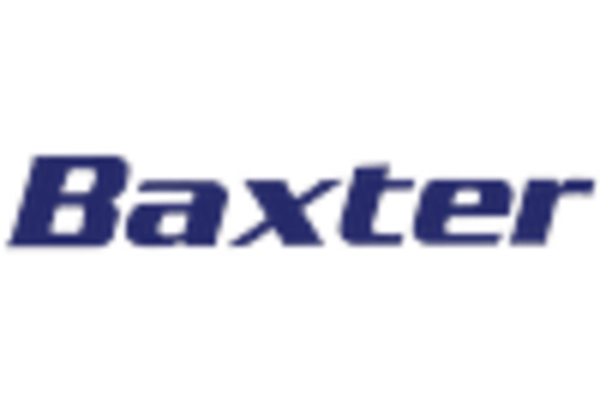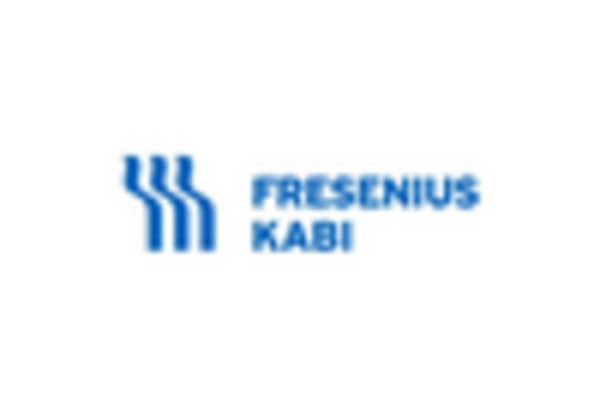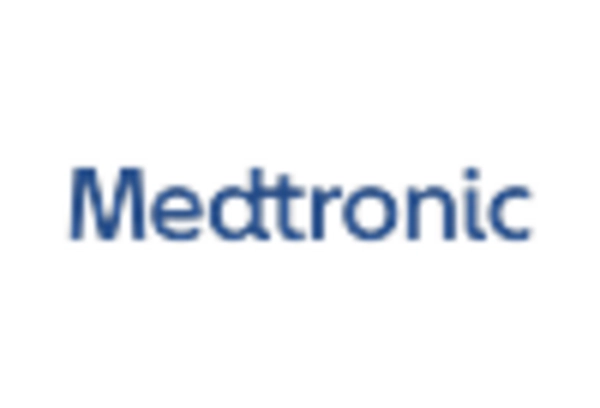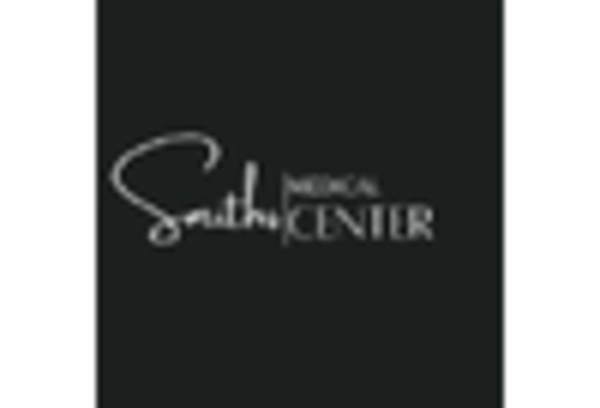Increasing Prevalence of Chronic Diseases
The Balloon Infuser Market is significantly influenced by the rising prevalence of chronic diseases, which necessitate ongoing medical treatment and management. Conditions such as diabetes, cancer, and cardiovascular diseases often require infusion therapies for effective management. Recent statistics indicate that chronic diseases account for approximately 70% of all deaths globally, underscoring the urgent need for effective treatment options. This growing patient population is likely to drive demand for advanced infusion systems, including balloon infusers, as healthcare providers seek to improve patient outcomes. As a result, the Balloon Infuser Market is poised for growth, with manufacturers focusing on developing innovative solutions to meet the needs of this expanding demographic.
Rising Demand for Home Healthcare Solutions
The Balloon Infuser Market is likely to benefit from the increasing demand for home healthcare solutions. As healthcare systems worldwide shift towards more patient-centric models, there is a growing emphasis on providing care in home settings. This trend is particularly relevant for patients requiring long-term infusion therapy, as home-based solutions can enhance comfort and convenience. Market data suggests that the home healthcare market is expected to grow at a rate of 8% annually, driven by factors such as an aging population and the rising prevalence of chronic diseases. Consequently, the Balloon Infuser Market may see a corresponding increase in the adoption of portable and user-friendly infusion devices designed for home use.
Shift Towards Minimally Invasive Procedures
The Balloon Infuser Market is witnessing a shift towards minimally invasive procedures, which are becoming increasingly favored in various medical fields. This trend is driven by the advantages associated with minimally invasive techniques, such as reduced recovery times and lower risk of complications. As healthcare providers adopt these methods, the demand for balloon infusers that facilitate such procedures is likely to rise. Market analysis indicates that the minimally invasive surgical market is projected to grow at a compound annual growth rate of 7% over the next few years. This growth may lead to an increased focus on developing balloon infusers that are compatible with minimally invasive techniques, thereby expanding the Balloon Infuser Market.
Regulatory Changes Impacting Balloon Infuser Market
The regulatory landscape surrounding the Balloon Infuser Market is evolving, with new guidelines and standards being introduced to ensure patient safety and product efficacy. Regulatory bodies are increasingly focusing on the approval processes for infusion devices, which may lead to enhanced scrutiny of product quality and performance. This shift could potentially result in a more competitive market, as manufacturers strive to meet stringent requirements. Additionally, the introduction of new regulations may encourage innovation, prompting companies to invest in research and development. As a result, the Balloon Infuser Market may witness a surge in the introduction of novel products that comply with these regulations, thereby expanding market opportunities.
Technological Advancements in Balloon Infuser Market
The Balloon Infuser Market is experiencing a notable transformation due to rapid technological advancements. Innovations in infusion technology, such as the development of smart infusion pumps, are enhancing the precision and efficiency of drug delivery. These advancements are likely to improve patient outcomes and reduce the risk of medication errors. Furthermore, the integration of digital health solutions, including mobile applications for monitoring infusion therapy, is becoming increasingly prevalent. According to recent data, the infusion pump market is projected to grow at a compound annual growth rate of approximately 6.5% over the next few years. This growth is indicative of the rising demand for advanced infusion systems, which is expected to drive the Balloon Infuser Market significantly.

















Leave a Comment